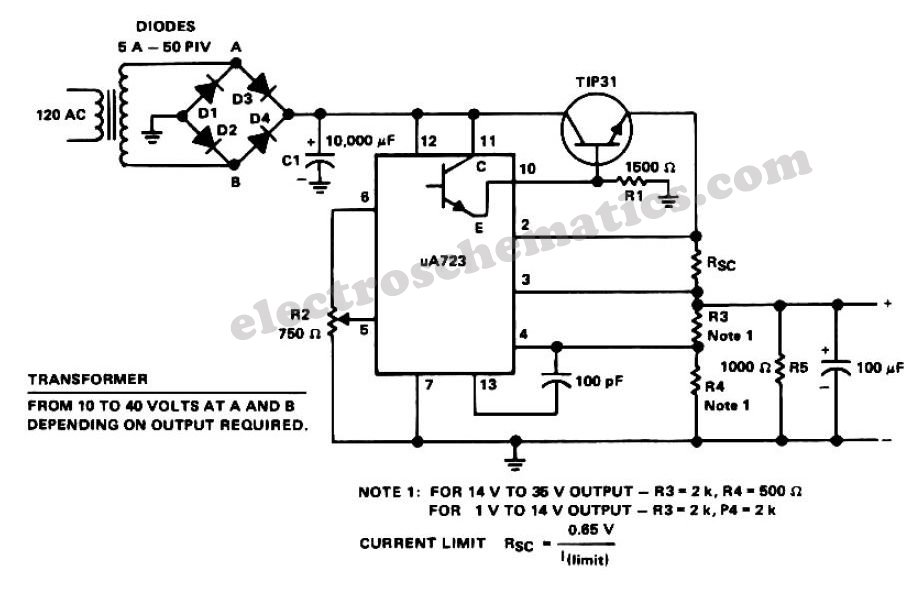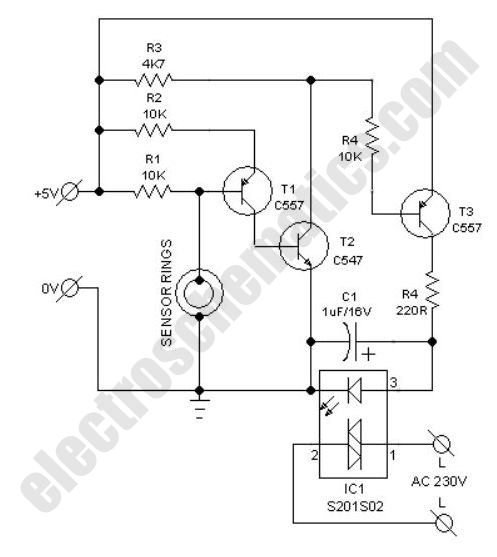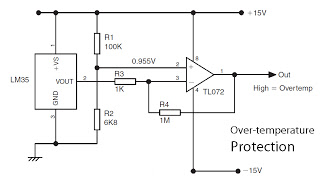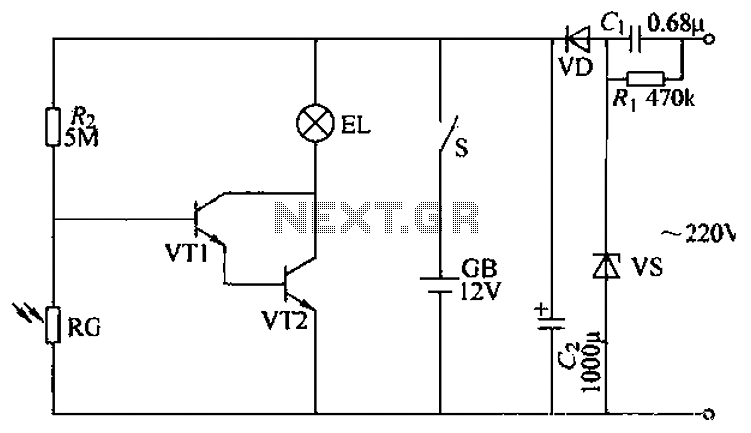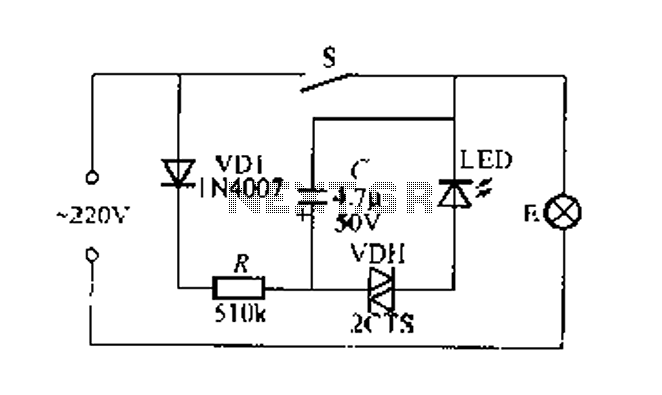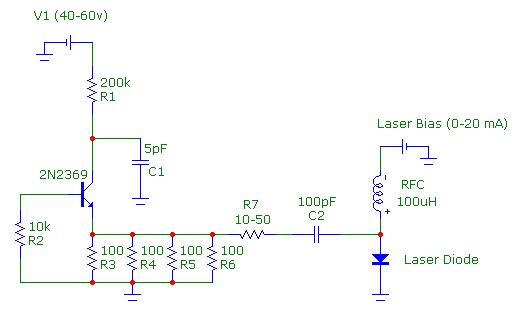
AUDIBLE LIGHT SENSOR
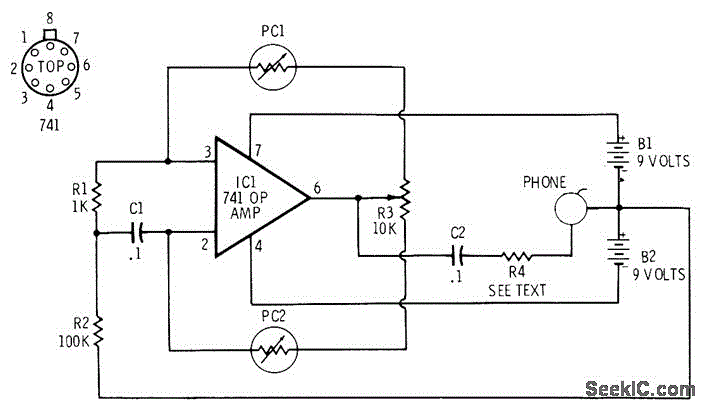
The 741 operational amplifier is configured as an audio oscillator utilizing Radio Shack 276-677 photocells within the feedback circuit. When light illuminates PC1, its resistance diminishes, leading to a corresponding decrease in the frequency of the audio tone heard in the headphones. Conversely, when light strikes PC2, which is connected to the non-inverting input of the 741, an increase in illumination results in a rise in frequency. Select R4 to...
The circuit employs the 741 op-amp in an astable multivibrator configuration, where the oscillation frequency is primarily determined by the feedback network comprising the photocells. The two photocells, PC1 and PC2, are positioned strategically to respond to varying light conditions, thus modulating the output frequency of the audio oscillator.
In this setup, PC1 and PC2 are used to influence the gain of the op-amp based on the light intensity they receive. Specifically, PC1 is placed in the feedback loop, where its resistance changes inversely with light intensity. This change alters the feedback factor, which directly affects the oscillation frequency produced by the op-amp. As light intensity on PC1 increases, its resistance decreases, thus reducing the feedback and resulting in a lower frequency output.
On the other hand, PC2 is connected to the non-inverting input of the op-amp. As light strikes PC2, its resistance decreases, which increases the voltage at the non-inverting input. This increase in voltage raises the output frequency of the oscillator. The interaction between these two photocells allows for a dynamic range of audio frequency modulation based on the ambient light conditions.
The choice of resistor R4 is critical in determining the time constant of the circuit, which in turn affects the overall frequency range of the audio output. Proper selection of R4, along with the characteristics of the photocells, will enable the circuit to produce a desired range of audio frequencies suitable for various applications, such as sound synthesis or educational demonstrations of light-to-sound conversion. It is essential to ensure that the power supply voltage for the 741 op-amp is within the specified limits to maintain stable operation and prevent distortion in the output signal.741 opamp is connected as audio oscillator with Radio Shack 276-677 photocells in feedback circuits. When light strikes PC1, its resistance decreases and frequency of audio tone in headphone decreases correspondingly. When light strikes PC2, which is connected to noninverting input of 741, increase in illumination serves to increase frequency.
Choose R4 to r.. 🔗 External reference
The circuit employs the 741 op-amp in an astable multivibrator configuration, where the oscillation frequency is primarily determined by the feedback network comprising the photocells. The two photocells, PC1 and PC2, are positioned strategically to respond to varying light conditions, thus modulating the output frequency of the audio oscillator.
In this setup, PC1 and PC2 are used to influence the gain of the op-amp based on the light intensity they receive. Specifically, PC1 is placed in the feedback loop, where its resistance changes inversely with light intensity. This change alters the feedback factor, which directly affects the oscillation frequency produced by the op-amp. As light intensity on PC1 increases, its resistance decreases, thus reducing the feedback and resulting in a lower frequency output.
On the other hand, PC2 is connected to the non-inverting input of the op-amp. As light strikes PC2, its resistance decreases, which increases the voltage at the non-inverting input. This increase in voltage raises the output frequency of the oscillator. The interaction between these two photocells allows for a dynamic range of audio frequency modulation based on the ambient light conditions.
The choice of resistor R4 is critical in determining the time constant of the circuit, which in turn affects the overall frequency range of the audio output. Proper selection of R4, along with the characteristics of the photocells, will enable the circuit to produce a desired range of audio frequencies suitable for various applications, such as sound synthesis or educational demonstrations of light-to-sound conversion. It is essential to ensure that the power supply voltage for the 741 op-amp is within the specified limits to maintain stable operation and prevent distortion in the output signal.741 opamp is connected as audio oscillator with Radio Shack 276-677 photocells in feedback circuits. When light strikes PC1, its resistance decreases and frequency of audio tone in headphone decreases correspondingly. When light strikes PC2, which is connected to noninverting input of 741, increase in illumination serves to increase frequency.
Choose R4 to r.. 🔗 External reference
